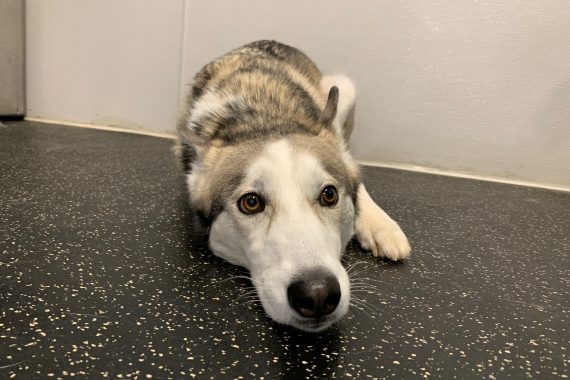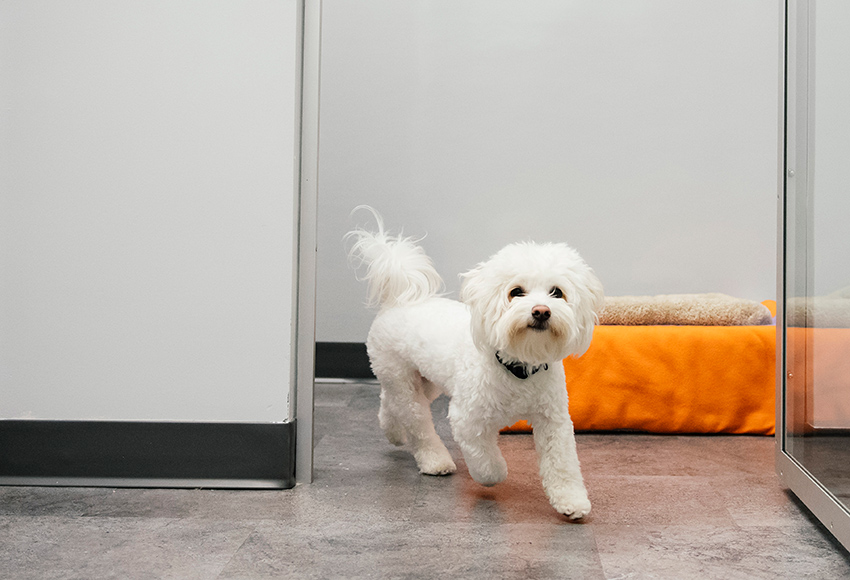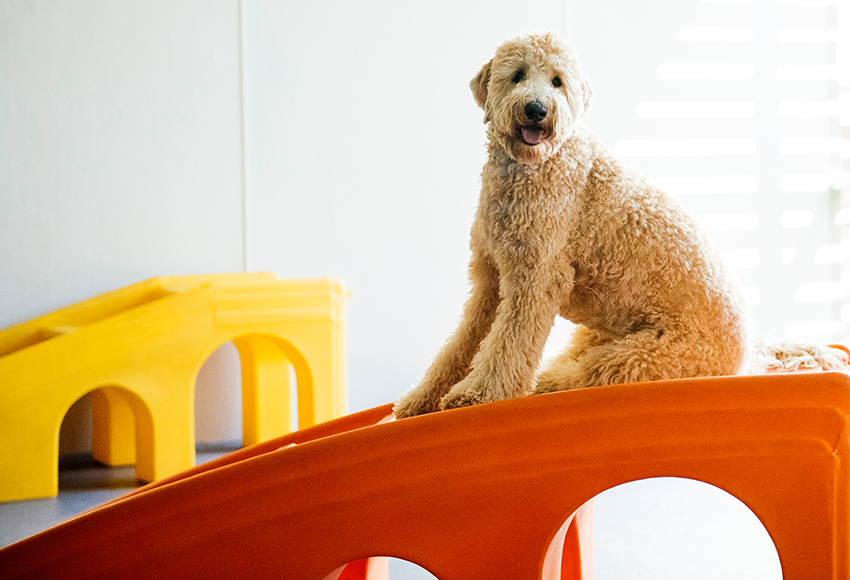Bonding With Your Dog – Part 2
November 27, 2018

Bonding With Your Dog – Part 2
Bonding with your dog is a journey, not a destination. Enjoy the path and know that every twist and turn just adds relationship value. Setbacks are inevitable, but you’ll both learn from them and carry that knowledge forward. We’ve combed our resources and have put together a few exercises and strategies that you can use to strengthen the relationship with your dog.
Strategies
Feeding
Feed your dog at specific times during the day, instead of free-feeding (leaving food down all day). This will make his/her food drive more focused and predictable and will link it to you. You become more important when the food comes from you instead of the bowl.
Play
Find games that your dog enjoys such as fetch, tug, etc. and play these consistently. They need the physical exercise, especially high-energy dogs, and you both need the one-on-one time. If your dog is making trouble — getting into boxes or closets, eating shoes or chewing on table legs — he’s/she’s basically showing you just how incredibly bored they are. Luckily, there is a quick and easy solution to this: training games.
Teaching your dog a new trick and/or working on old tricks are ways to stimulate both your dog’s mind and body. An hour of training is worth a couple hours playing a repetitive game of fetch (in terms of wearing a dog out). While physical exercise and walks are important, adding in some brain work will make your dog happy-tired.
Even just 15-30 minutes of trick training a day will make a big difference. Ramp up activities with him/her. Playing, retrieving, agility, swimming—whatever the two of you can have fun doing together. Like kids at the schoolyard, fun interaction builds friendship and loyalty. Dogs are like toddlers, they like to be engaged and played with.
Loose Leash Walking
Think of the leash as a communication line. Everything you’re feeling runs right down your arm through the leash to your dog. All your feelings/emotions (If you’re having a good day, you’re frustrated, you’re not thinking about the moment, etc.) are getting picked up by your dog. You should be walking your dog daily, especially for the first few months. Several times a day if possible. An amazing amount of energy is transferred between you and your dog through that little strip of nylon or leather. By keeping a loose leash, you’re letting your dog know that everything is fine and dandy, that there’s no reason to be worried or tense. With a slack leash you’re saying to your dog that you are calm and have everything under control so your dog is free to be calm as well.
Routine
Set a specific schedule for all things and have consistent rules – times to be fed, who walks and when, if they are allowed on which furniture, their crate area, etc. The more detail you can provide and the more consistency the better. Inconsistency leaks trust away. Retraining is also more difficult than starting from scratch. Additionally, if there’s more than one person in the family make sure you’re rotating all the responsibilities (feeding, walking, playing, training, etc.) If you have a “food” person only you’ll build bonds inconsistently across the family.
Be the Parent
Canines crave order. Establishing that you’re the boss helps cement the roles. Subscribe to the Nothing In Life Is Free (NILIF) philosophy. Make them sit to eat, sit to go out, sit to start play, sit for treats, etc. You direct the tasks. Dogs actually prefer to have you make the decisions and take the burden off of them. They relax and focus on the moment more. They pay attention to what you do more than what you say.
Touch & Talk
Brush and pet regularly to desensitize her/him to touch and to build up their desire for physical affection. That includes taking the collar on/off, touching paws, ears, etc. High touch (that dogs appreciate) does wonders. Talk to your dog as well, just as in the feeding routine, the more they associate your voice with positive experiences the better your connectivity will be.
Train
Start obedience training (come, sit, stay, down…) if you haven’t already and keep it up. This will create good communication between the two of you, help your dog focus, and foster a sense of teamwork and belonging. Work the recall command or “Come” often. Do so first on a leash or long lead and only graduate to off-leash when your dog comes back to you every time on the lead, even with distractions. Succeeding at this will be proof of her/his focus and of her/his desire to do what you ask instead of what she/he wants. When working off-leash recalls, don’t stay in one spot; instead, run away from her to make the exercise into a game and boost her desire to be with you.
Respect
Socialize her with people and dogs, but always look out for her/his wellbeing. By being a caring, vigilant mentor, you’ll build her trust and confidence and raise her/his opinion of you. Also, if they don’t like something don’t do it, teasing unravels trust faster than just about anything, and depending on the breed the results can be disastrous. As part of building trust don’t call them to then punish them or make them do something they don’t want, it just erodes the “come” command so it isn’t reliable when you most need it to be.
Learn Their Language
Know the signs for when your dog is uncomfortable – Do they tense up, lean their head away from you, avoid even a hint of eye contact, lick their lips, keep their mouth closed, pull their ears back against their head? Yes, even the dog licking her lips while someone snuggles her is not showing that she is overcome with love, it is nervous behavior. Learning some of the non-verbal cues that your dog gives you and “listening” to them goes a long way towards building that mutual respect for space.








